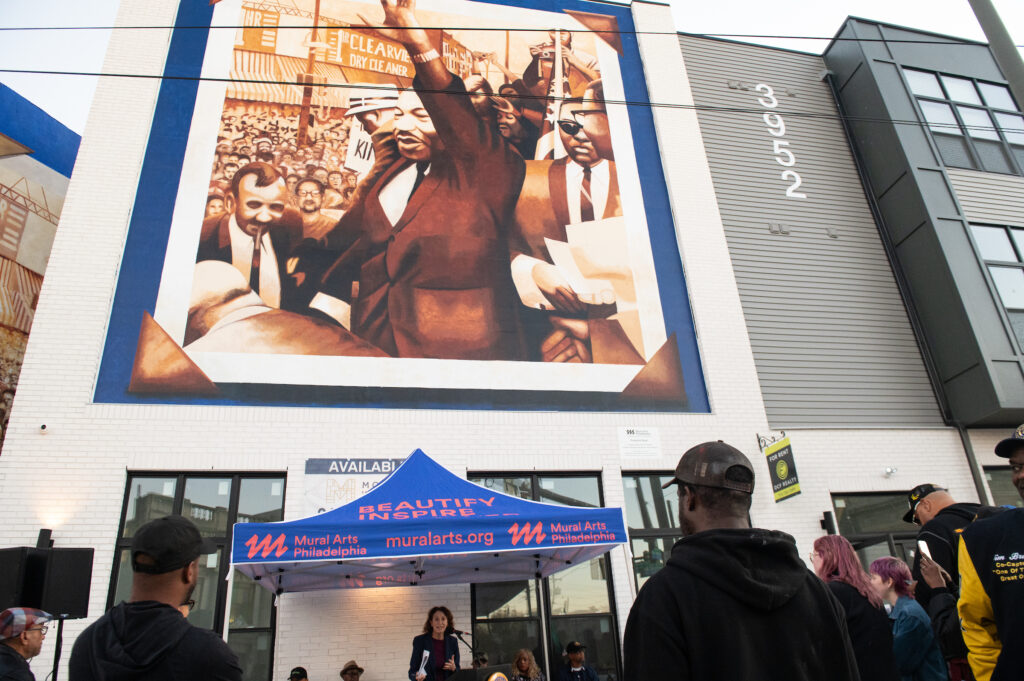Independence Day: Celebrating Forgotten Histories
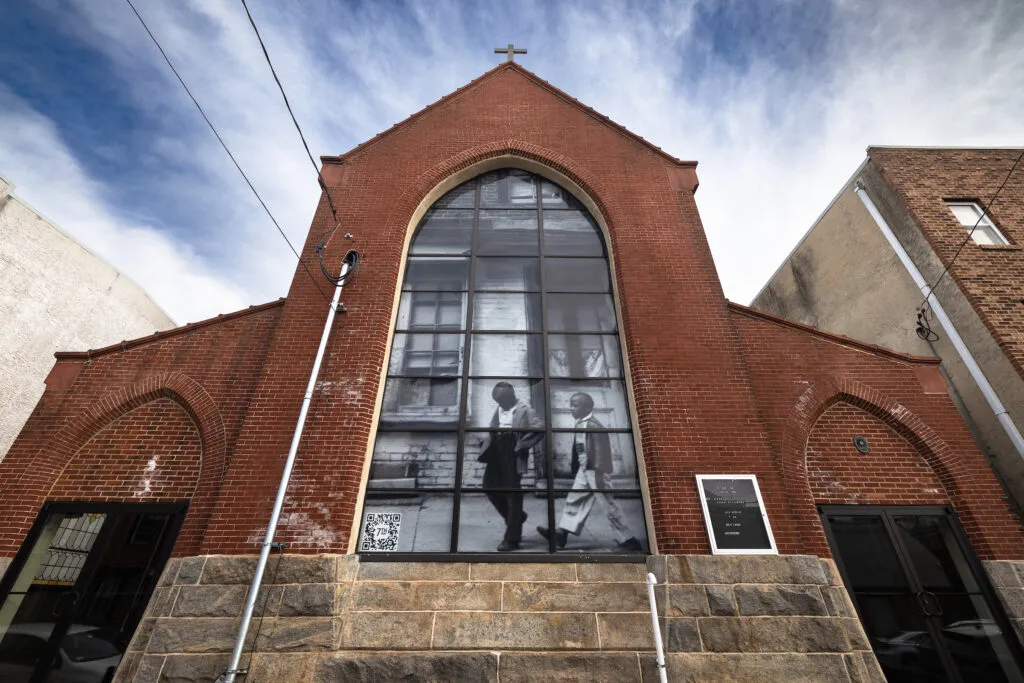
From cobblestone streets to colonial architecture, the city of Brotherly Love and Sisterly Affection’s monumental role in shaping our nation still resonates today, crystallized in the echoes of the past. While political ties with Great Britain were officially severed on July 4, 1776, the Declaration of Independence was formally signed on August 2, 1776, in the Pennsylvania State House, now known as Independence Hall, located at 5th and Chestnut Streets.
While the sites of the American Revolution have been monuments in our city that continue to stand the test of time, Mural Arts is committed to preserving the sacred, interwoven chronicles of its people through the timeless and radical use of art, earning us the title of “The Mural Capital of the World”.
In observance of Independence Day, Mural Arts is taking a moment to celebrate freedom, diversity, and the often-overlooked histories right here in the city of Philadelphia. As the nation’s largest public art program, we are dedicated to preserving the multifaceted narratives of human lives through art that ignites change.
William Still & Family
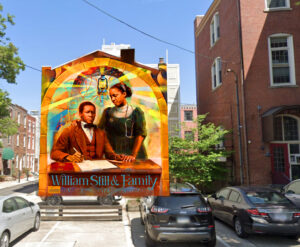
From 1850 to 1855, Still and his wife, Letitia, along with their two children, Carolina Virginia and William Wilberforce, hid and provided shelter for hundreds of escapees while living at 625 Delhi Street, a historic landmark located in the heart of the Bella Vista neighborhood. The home was added to the Philadelphia Register of Historical Places on March 9th, 2018.
With a ministry of familial reconciliation, Still set the stage for several reunions through record-keeping, later penning his book “The Underground Railroad” (1872). The text depicts the accounts of several hundred freedom seekers that he encountered in his office while serving as chairman of the Vigilance Committee, an extension of the Pennsylvania Anti-Slavery Society.
The mural, by renowned artist Ernel Martinez, depicts William Still and his daughter, Dr. Caroline V. Still Anderson, who became the first African-American licensed physician in Philadelphia.
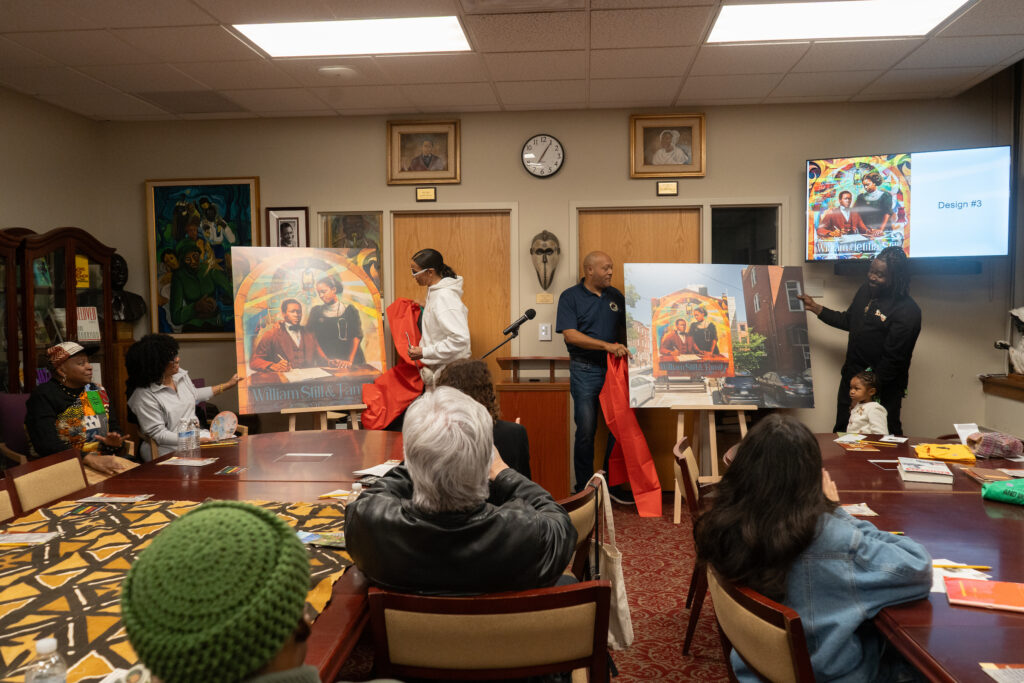
7th Ward Tribute Project

Home to prominent Black figures W.E.B. Du Bois and Octavius V. Catto, Philadelphia’s historic 7th Ward was an epicenter of over 15,000 Black community members and an integral space for the Underground Railroad and the Great Migration. Located between 6th Street and 23rd Street and between Spruce Street and South Street, the echoes of its legacy continue to thrive in Philadelphia today. It is home to Mother Bethel African Methodist Episcopal (A.M.E.) Church, and has been largely depicted in The Philadelphia Negro (1899), a sociological document written by W.E.B. Du Bois.
In a recent partnership with Mural Arts, Little Giant Creative, and the Philadelphia City Archives, the immersive art and history initiative “Time Bandit was of the 7th Ward” by artist and mythologist Li Sumpter reimagined Black futures while paying homage to the rich legacy of its past. The project also included “Reflecting Revenants: REcalling Black Life in the 7th Ward,” an art installation project by Beth Naomi Lewis and Amelia Carter. From October 2023 to February 2024, attendees were invited to engage with multifaceted exhibits featuring gaming and immersive art, walking tours, and panel discussions that reimagined the history of the 7th Ward and its people in a speculative future context.
Read this blog about the project.

MLK Freedom Now!
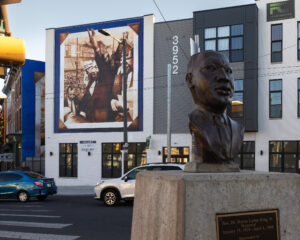
On August 3rd, 1965, Dr. Martin Luther King Jr. delivered one of his most critically acclaimed speeches in West Philadelphia, drawing over 10,000 attendees during his “Freedom Now” campaign, radically demonstrating that the battle for civil rights and racial equality belonged just as much to the North as it did to the American South.
In 2009, a mural commemorating Dr. King’s speech was created by artist Cliff Eubanks. Located at 40th Street & Lancaster Avenue, a photograph by James Franklin of SCOOP USA newspaper served as the visual inspiration. In 2023, new construction obscured the view of the original mural, so Mural Arts joined forces with Full Court Development to envision and create a new version of this beloved artwork. Kien Nguyen and Efrain Herrera painted the latest mural with input from Cliff Eubanks.
